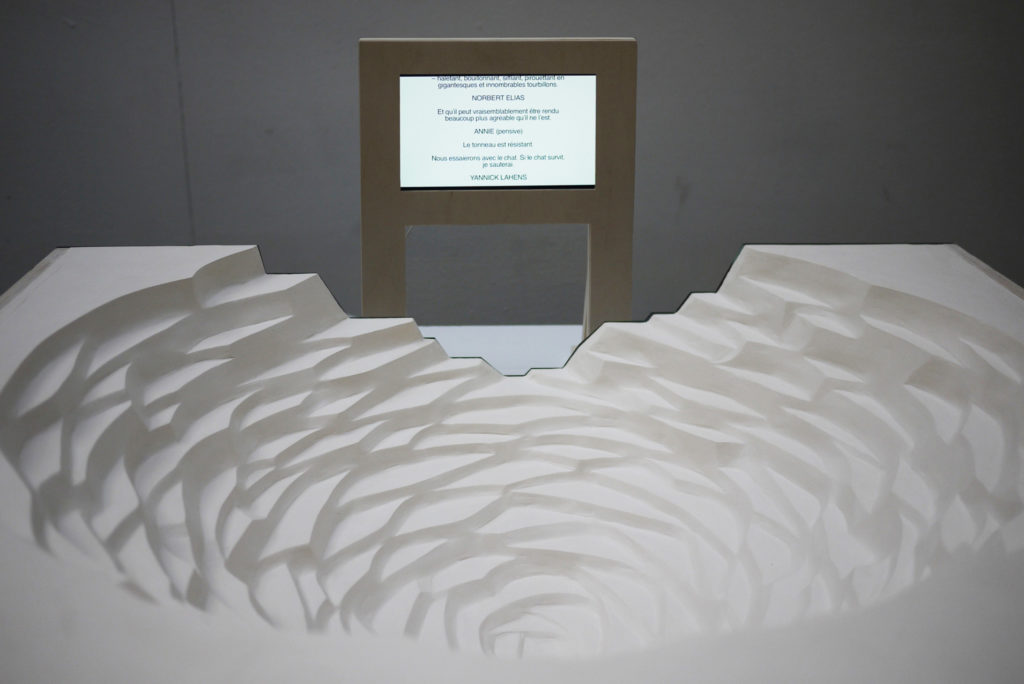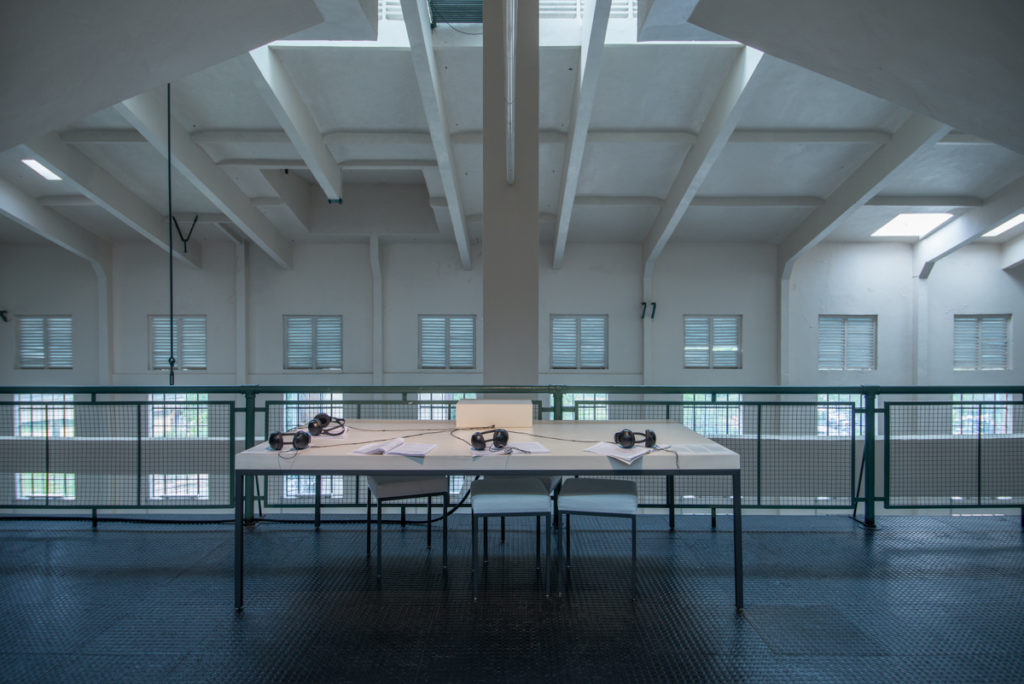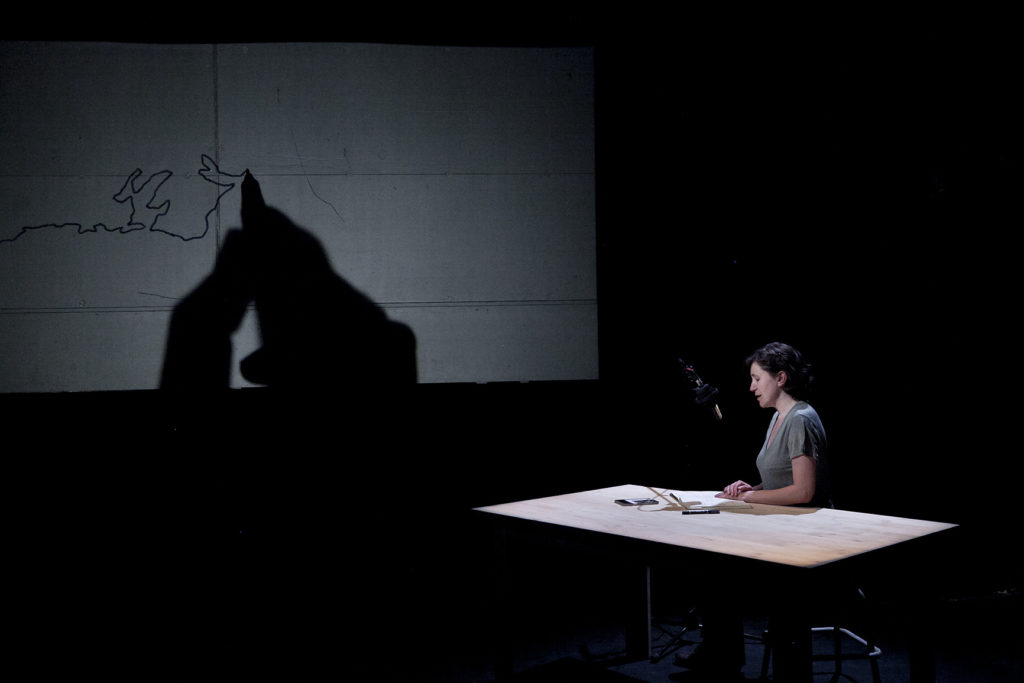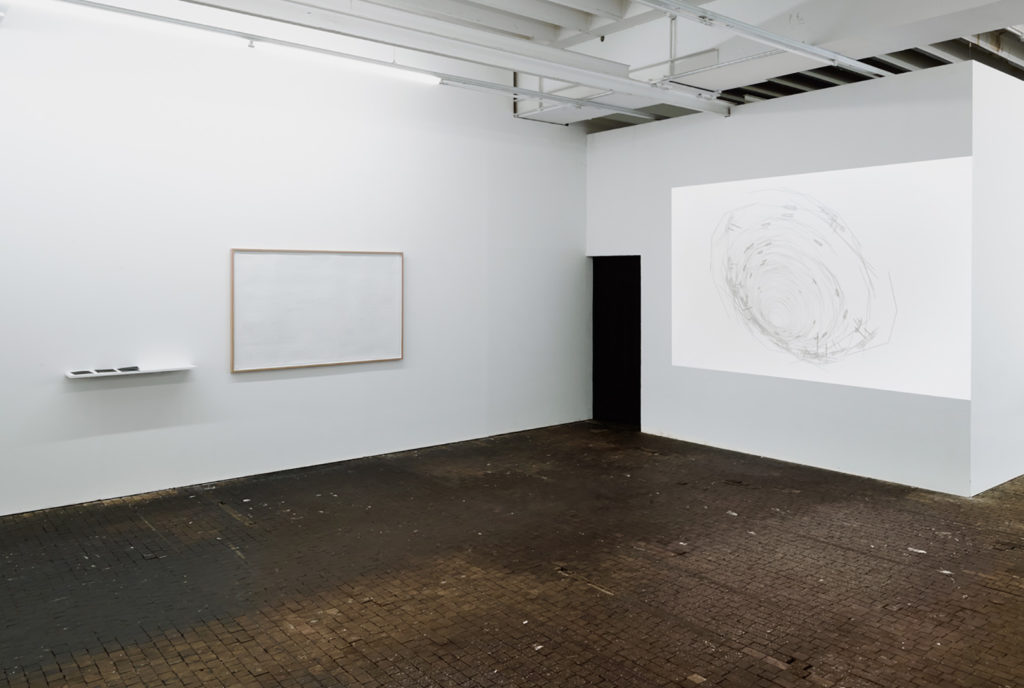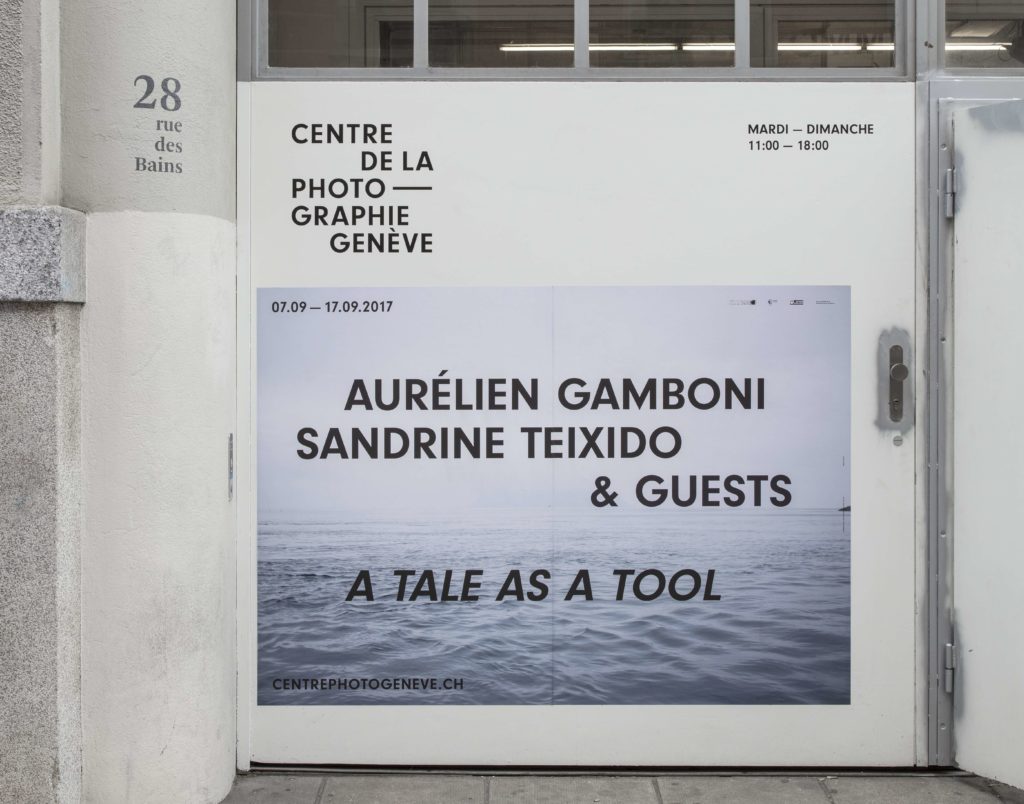Since 2011, we have been developing a long term investigation based on Edgar Allan Poe’s short story entitled “A descent into the maelström” (1841). Using this tale as a conceptual tool to challenge narratives of adaptation to environmental threats, we have led a series of field researches and explored through multiple forms and formats – such as editions, installations and public situations – the past and future resonances of this story.
Evoking of the fate of three brothers caught in a gigantic maelström (whirlpool) in the North of Norway, Poe’s tale has often been used by thinkers and theoreticians to conceptualize the dynamics of interdependence between humans and their environment (both social and ecological) in a situation of imminent danger. In particular, it allows to understand how people trapped in a vicious circle can deepen the perception of its dynamics, drawing out of observation new practical and emotional resources to avoid catastrophe. In the tale, one of the fishermen manages to overcome fear and observe all the other objects caught with him in the maelström, deducing a causal relation between their shape and the speed of their descent to the bottom of the whirl. Understanding that a barrel can serve as a more suitable vehicle in this context than a boat, he thus finds the way to escape his dreadful fate.
Sociologist Norbert Elias, media theoretician Marshall McLuhan, illustrator Fritz Eichenberg, theoretician Gene Ray, environmental historian Grégory Quenet and more recently philosopher Bruno Latour, among others, have referred to the allegorical potentialities of the story as a way to conceptualize the major challenges of their own historical periods.
Considered as a tool, Edgar Poe’s tale requires to be carried, displaced, activated. Furthermore, it allows to gather new narratives, constituting a fiction «carrier bag» (as writer Ursula Le Guin puts it), that challenges the perception of environmental changes and adaptation issues. This process has already been experimented on several occasions: In 2013, we were invited by the Mercosul Biennial to research on the floods history in Porto Alegre, and its numerous social and environmental implications, while in 2014-2015 we pursued the investigation on the site of Poe’s tale itself, in the Norwegian High North, a region that is currently at the vanguard of numerous controversies regarding the development of the oil industries in the Arctic. Both times, this process led to the production new models and narrative fictions, as well as to various forms of public activations, by the means of art installations, performances and publications.
Those early developments have constituted a rich and diverse corpus of narratives/testimonies and models/diagrams, which requires both to be activated in local situations and to be extended by the collection of new material. After realizing an investigation residency in Porto Alegre for the 9th Mercosul Biennial in 2013, and developping a series of performances at Théâtre de l’Usine following our trip to the Lofoten islands (on the site of Poe’s tale, in the Norwegian arctic) in 2014-2015, we launched at the Museu de Arte Contemporânea de Niterói in August 2016 the beginning of a new series of installations entitled « A tale as a tool », that will progressively take place in various locations, such as the Gallery G-MK in Zagreb in Octobre 2016, and the Centre de la Photographie de Genève in 2017. Staging a specific selection of documents and sound extracts in each different locations, these installations are meant to host a series of public events such as lectures and collective reading sessions, questioning the perspective of an invisible catastrophe which requires to build new relations and shared concerns between remote areas of the world.
